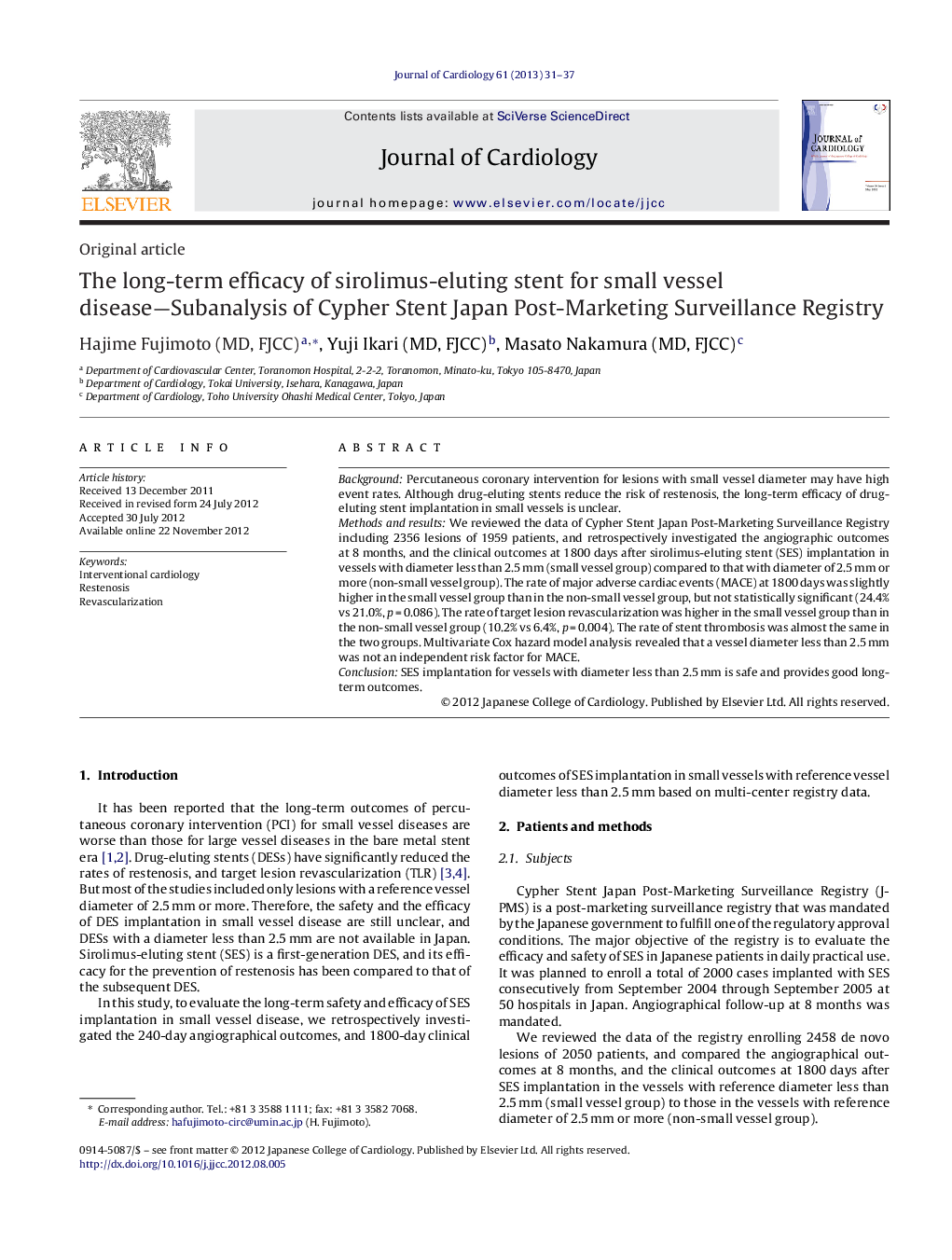| Article ID | Journal | Published Year | Pages | File Type |
|---|---|---|---|---|
| 2963215 | Journal of Cardiology | 2013 | 7 Pages |
BackgroundPercutaneous coronary intervention for lesions with small vessel diameter may have high event rates. Although drug-eluting stents reduce the risk of restenosis, the long-term efficacy of drug-eluting stent implantation in small vessels is unclear.Methods and resultsWe reviewed the data of Cypher Stent Japan Post-Marketing Surveillance Registry including 2356 lesions of 1959 patients, and retrospectively investigated the angiographic outcomes at 8 months, and the clinical outcomes at 1800 days after sirolimus-eluting stent (SES) implantation in vessels with diameter less than 2.5 mm (small vessel group) compared to that with diameter of 2.5 mm or more (non-small vessel group). The rate of major adverse cardiac events (MACE) at 1800 days was slightly higher in the small vessel group than in the non-small vessel group, but not statistically significant (24.4% vs 21.0%, p = 0.086). The rate of target lesion revascularization was higher in the small vessel group than in the non-small vessel group (10.2% vs 6.4%, p = 0.004). The rate of stent thrombosis was almost the same in the two groups. Multivariate Cox hazard model analysis revealed that a vessel diameter less than 2.5 mm was not an independent risk factor for MACE.ConclusionSES implantation for vessels with diameter less than 2.5 mm is safe and provides good long-term outcomes.
